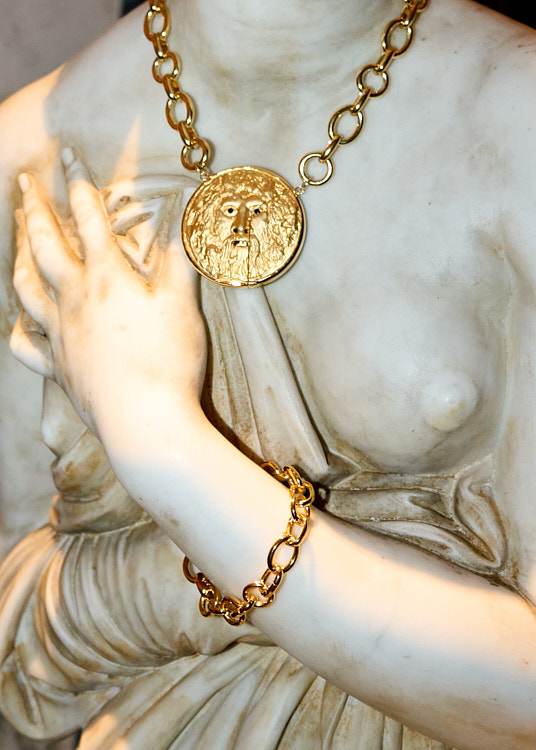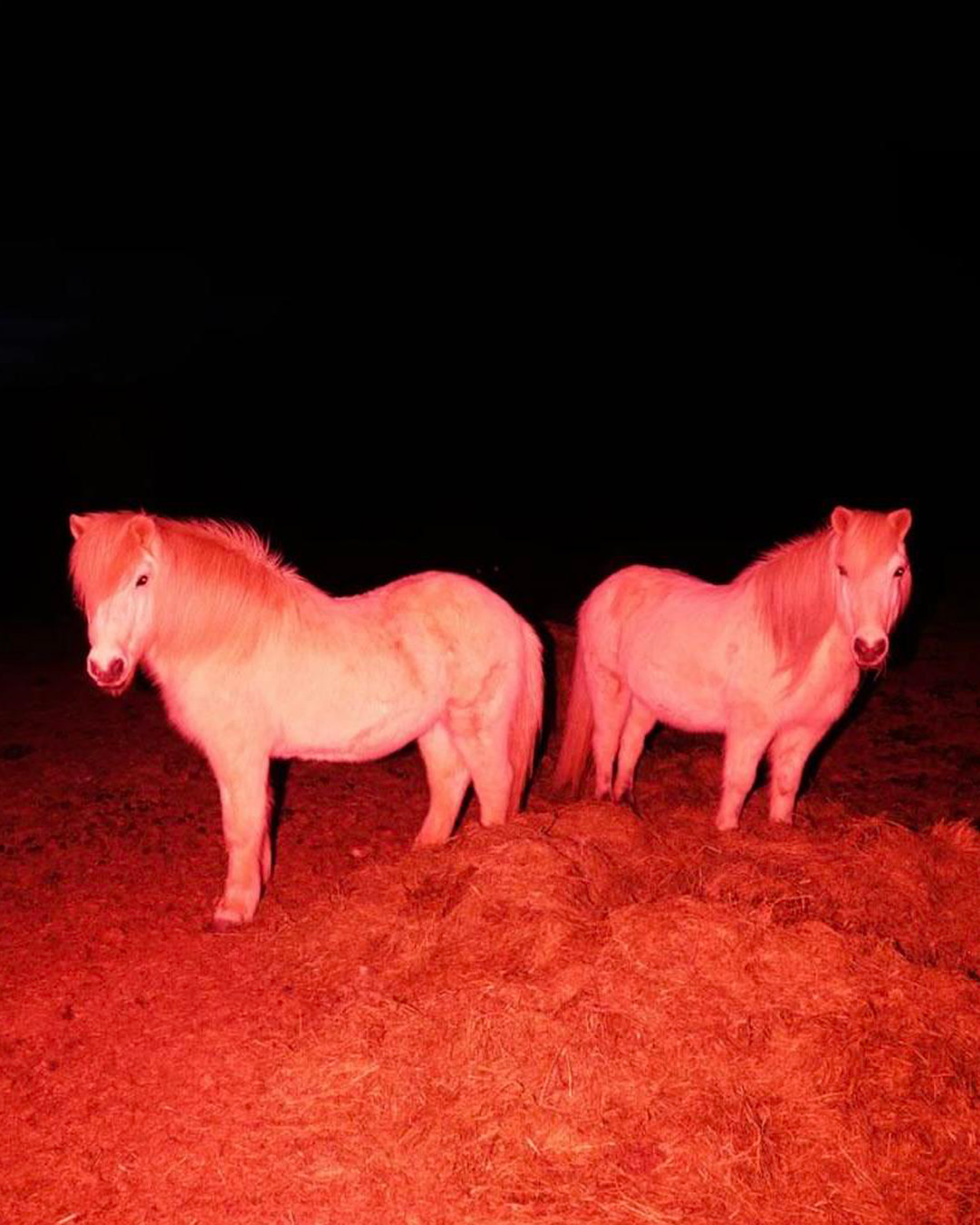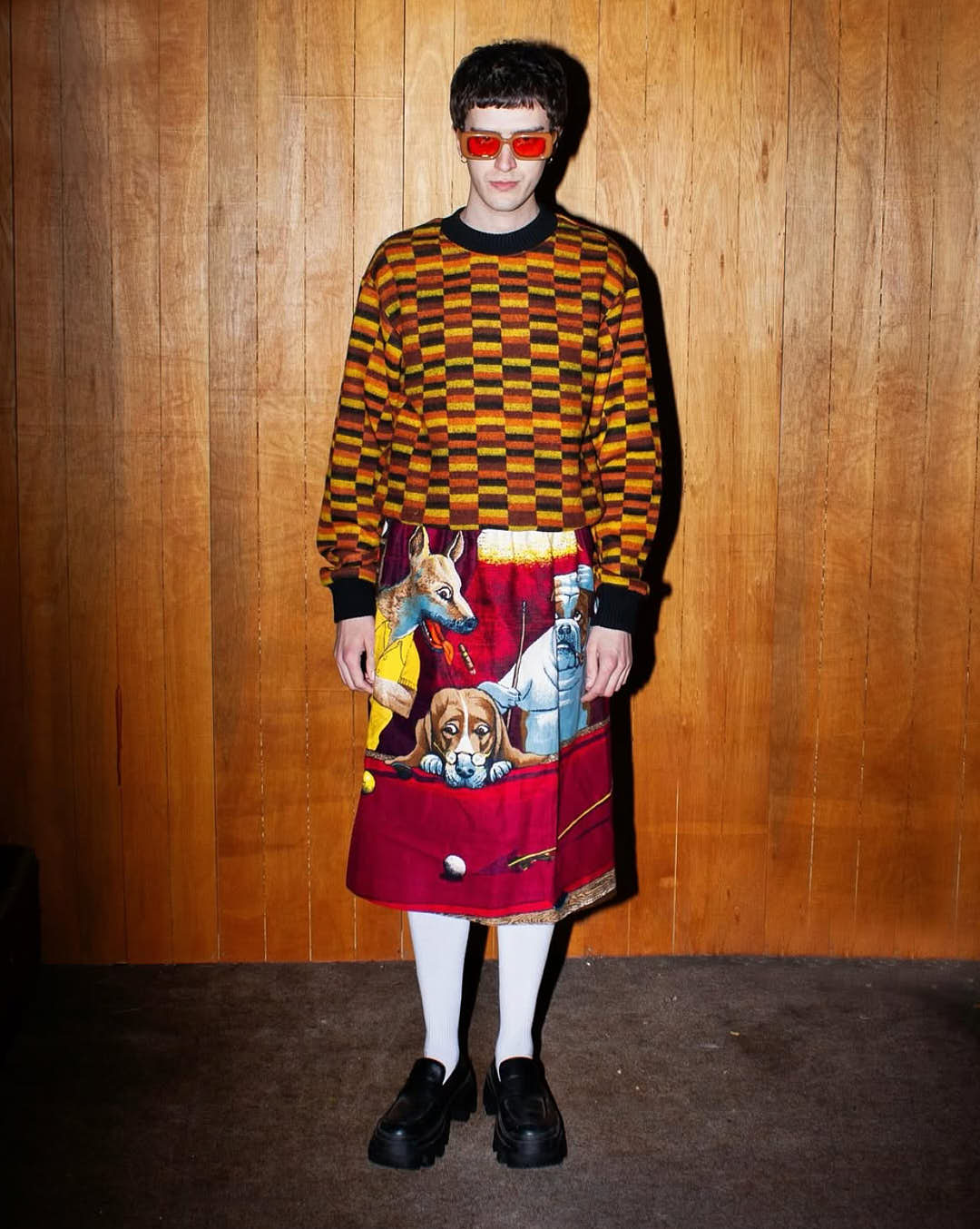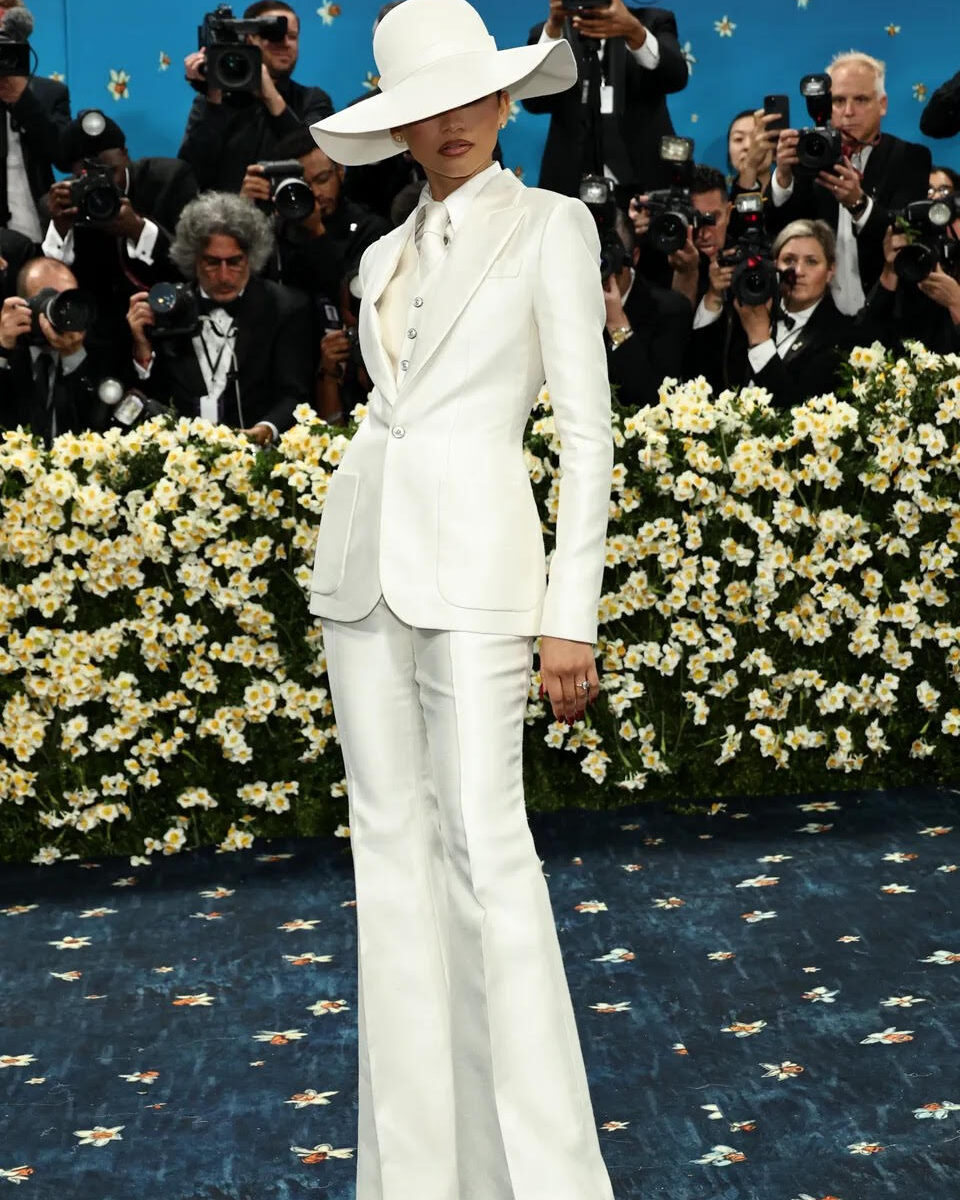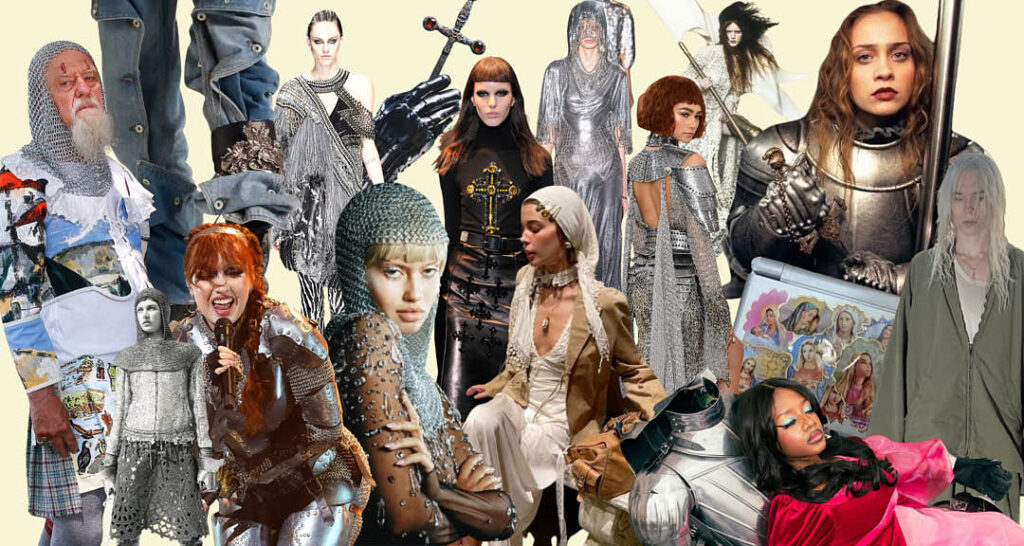
Castlecore, Chainmail and Charms: Why Is Fashion Going Medieval?
Written by Jude Jones
At the beginning of the year, Pinterest projected “castlecore” as one of fashion’s in-trends for 2025, a mezze plate of Internet-inflected medieval gestures including coquettish white lace, chainmail accoutrements, and ornate antique jewellery. However, almost as soon as the cyber-sibyl had cast its tea leaves and read its fortunes, Vogue Business riposted: “Micro-trends are dead. Long live the vibe.”
People are weary with the ephemeral, article author Amy Francombe argues, exasperated with the mayfly-like lifespan of the infinitesimal algorithmically churned trends and cores that have sprung a cottage industry of stylised, wolf-in-core’s-clothing fast fashion and fleeting, dead-before-they-start aesthetics. People want to embrace against this something more holistic, multifarious, and enveloping. Something of brat summer’s ilk, Francombe continues, which is more embodied by lifestyle choices – glazy-eyed hedonism, white powder on a French-tip nail, unkempt hair and a dialectic revulsion to the clean girl – than by sets of esoteric signifiers that whisper “castlecore”, or “gorpcore” or “officecore”, et al. and so on and so forth.
“Castlecore”, I’m willing to admit, might have been a little stillborn micro-trend wise, brought into the world with the dewy, chimeric, won’t-survive-until-morning optimism of that two-headed calf of Tumblr poem fame. Francombe was right on this front, at least. However, for much longer than this a phygital cult of antiquarians and amateur medievalists, myself included, have been using the Middle Age as a map for the craggy topography of contemporary life, seeking to resurrect, however anachronistically, some of its ideals, mythologies, and ontologies. If modernity has long been decried as banal and disenchanted, the hyper-enchantment of the medieval world has just as long seemed a sightly panacea. Medievalism, in this sense, is far more than just a micro-trend. Medievalism might be something of Vogue’s apocryphal vibe.
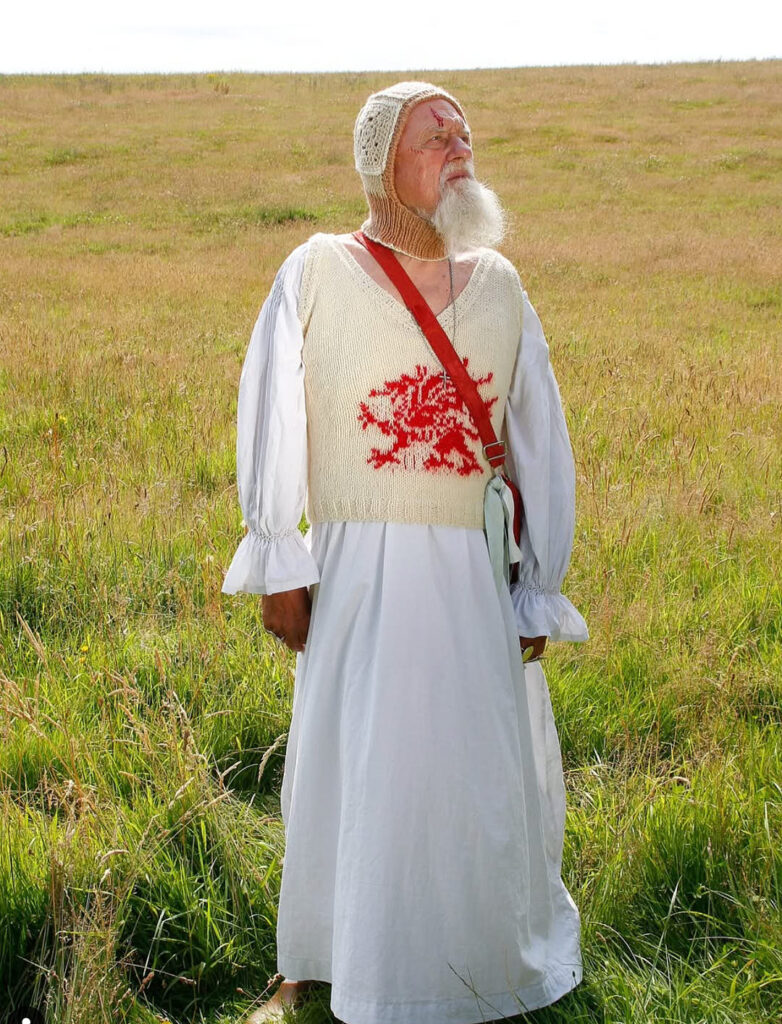
Rosie Evans, a Brighton-based fashion designer who works with medieval motifs, points half-a-century backwards to locate an analogous trend in our recent memory, an earlier crystallisation of these dynamics. “For me,” she writes, “[castlecore] is a fun new name for a trend that has never really gone away… similar to medieval revival in the 1960s [and] 1970s.” An ancillary of the hippy counterculture of the time, this earlier “medieval revival” was shaped most impactfully by the 1954-5 release of J.R.R. Tolkien’s The Lord of the Rings which incanted straightforwardly its psychological purpose in its genre’s title: fantasy. Against a political milieu of escalating conflicts over civil and social rights, rising discontent with the Vietnam War, and an ascendant technological revolution death-headed by a nuclear arms race and its promises of secular apocalypse, the arcadian dreamscape of life in a fairytale or historic otherworld opened pathways to individual escapism while also articulating a distaste for scientific modernity, preferring a peaceful, pre-disruption past.
This ethos, in essence, hasn’t changed. “When the world is in such turmoil,” Rosie continues, “[when] there’s wars, pandemics, growing poverty and climate disaster looming… people want and need escapism.’ Isabella Greenwood, an arts and culture critic, suggests that these latent desires even manifest in the nomenclature of “castlecore”: “In Freudian psychoanalysis,” she adds, “the castle can be understood as a fortress of the self – a defensive structure that shields against the chaotic external world.”
Anti-modern digital aesthetics that invoke a romanticised past as a reaction against the Internet’s ouroboros-like monoculture and then before circulate and self-promote said aesthetic as a digital “core” are nothing new: see “cottagecore” and “tradwifing” as examples. Yet, there is a degree of self-awareness to how digital medievalisms articulate this relationship. “[Castlecore] marks a tiredness with the obsession with the curated ‘clean girl,’” writes Anna Chandler de Waal, an author who runs the medieval-coded Substack blog and zine, Lunulae, “… [a tiredness] with the falsely sanitised, smooth and shiny avatar-selves.” The curator of medieval meme page @medievalwounds, who prefers to remain anonymous, concurs. “Too often being a girl/woman on the internet is about shaping yourself to a narrow beauty standard and subscribing to the capitalist logic that everyone is a ‘brand’ that has to be ‘marketed.’” Online medievalism therefore works at the digital intersection of feminism, anti-capitalism, and digitality itself, using the medieval imaginary as a reactive stalwart against these contemporary forces. It is all a “mirror for contemporary anxieties,” Isabella continues, “a fantastical projection of our yearning to escape and the structures that contain us.”
There is then a degree to which online medievalisms are a dialectic opposition to these modern developments, a simple reaction against a digitised world. Yet, this doesn’t hold true beyond a cursory glance. A key part of online medievalism is being online, consuming all its memes and esoteric references with the diligence that only being chronically online can bestow. But if one of the key tenets of “castlecore”, extended into the world of a vibe, is a desire to remedy the dearth of spirituality to, the metaphysical emptiness of, contemporary life, the Internet becomes a key tool in its project of re-enchantment.
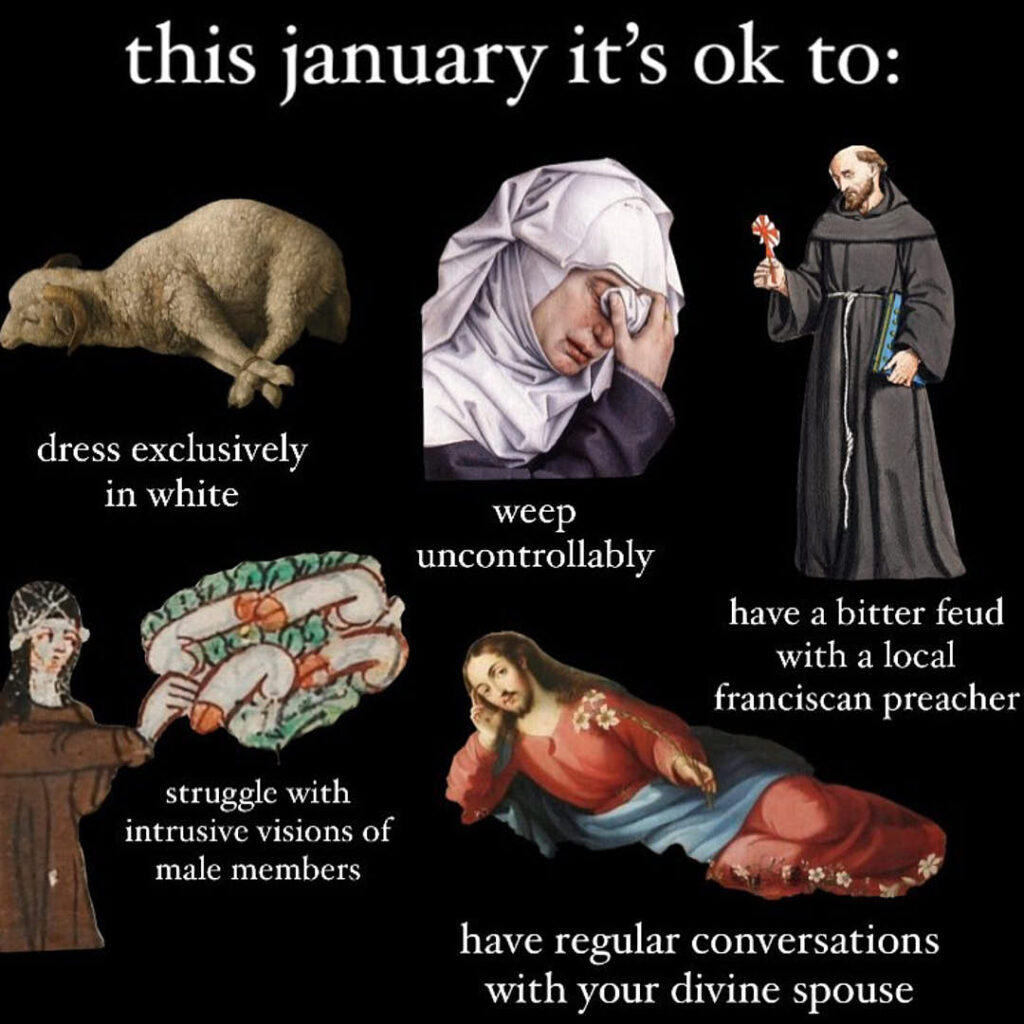
As early as 1999, Australian philosopher Margaret Wertheim suggested that the global propagation of the Internet would have profound ontological implications by allowing internauts to accede to a transcendental, metaphysical other-space with a simple login or click. More recently, Bogna Konior, a Professor of Computer Culture at Shanghai University, has likened the experience of being online to a medieval monastic in their cell, alone in spiritual study and with access to an invisible, omniscient source of knowledge, God simply being supplanted here by ChatGPT or Deep Seek. The online space is as much a tool of re-enchantment as it might be a symptom of reality’s broader disenchantment.
Spiritual re-enchantment and metaphysical transcendence, pillars of a neo-medieval worldview, therefore depend on the Internet just as much as they react against it. Cyberspace has become a part of the medieval “vibe”, become part of our re-enchantment of the world. Through its power to connect those with even the nichest interests and obsessions, it has generated novel spaces where Internet esoterics can commune and create their own medievally-inflected languages and iconographies – and perhaps with a less plastic interest than the medieval revivalists of the 1960s and 1970s, thanks to the Internet’s ability to democratise knowledge through platforms like JStor and create deeper engagements.
So, on the @medievalwounds Instagram account, relatively peripheral figures such as Julian of Norwich – a fourteenth-century English anchoress who had ecstatic visions of Christ on her deathbed, promising her “all shall be well” – and Catherine of Siena – a fourteenth-century Italian mystic who envisioned herself licking salvatory blood from Christ’s quasi-pornographic, vagina-like side-wound – are raised to the stature of celebrity, articulating forms of womanhood that are spiritually, and possibly erotically, richer. “Medievalist girlhood memes,” continues @medievalwounds, “interrogate [brand-oriented social media culture] and turn it on its head by highlighting the strangeness of the Middle Ages… They present us a view of being a girl/woman/person that is in opposition to the highly aspirational, polished and consumerist Instagram aesthetic.”
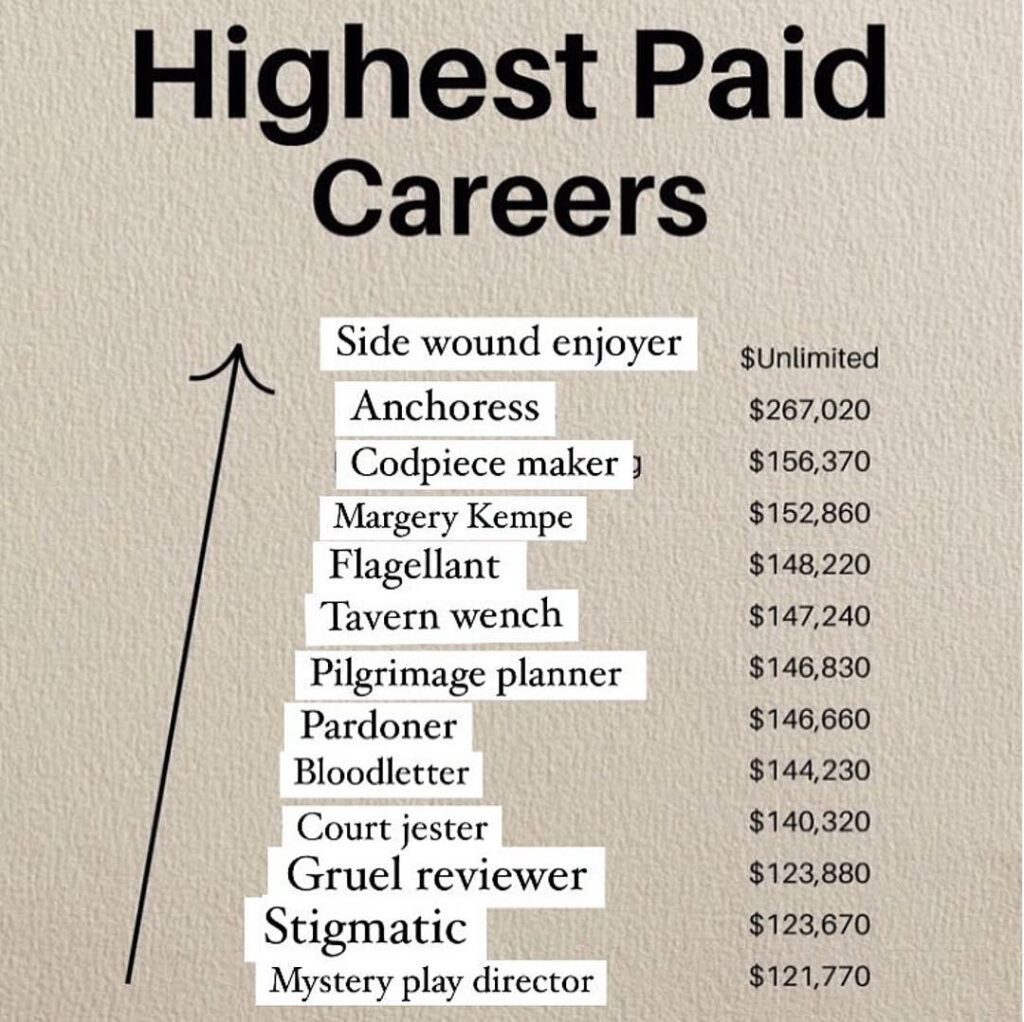
Against today’s “clean girl”, medieval women were messy and dirty and grotesque, revelling in body fluids and libidinal religious experiences. Against today’s drive toward the rational and scientific, medieval women were mystical and acted as conduits of divine contact, entering mindspaces beyond that which is tangible or visible. Against today’s drive to instant pleasure and gratification and consumption, “nothing was instantaneous,” for medievals, “not even for the princess in her castle. All is labour, and because of this, all is rendered more precious,” as writes Anna.
And, against a contemporary culture that increasingly idolises conformity, complicity, and invisibility, especially among women, as everybody is paradoxically rendered more visible by social media and surveillance capitalism’s panopticon, these women were hyper-visible and extra-ordinary. Margery Kempe, a born-again virgin who was a contemporary of Julian’s and visited her in her cell, was essentially banned from her church as she kept disrupting its services, bursting into unquenchable tears at the mere thought of Christ’s redemptive, semi-erotic love. She has fittingly become yet another part of @medievalwounds’s medieval pantheon.
Of course, this all comes with the obvious caveat that the Middle Ages generally weren’t the most prosperous or inclusive period of human history and necessitates acknowledgement of all the ways that the far-right has abused and invoked medieval history for its own ideological ends, both on- and off-line. However, as a medieval “vibe” cements itself in certain esoteric corners of the Internet, manifesting in the mainstream from time to time in sporadic trends and fleeting cores, it is worth considering the manifesto it sets out against the bind of our current times. We are collectively yearning for something beyond modernity – the message of Robert Egger’s Nosferatu was essentially that the “Middle Ages” alchemist Professor von Franz (Willem Dafoe) was right, the science-fetishist Herr Harland (Aaron-Taylor Johnson) was wrong – and maybe the answer comes from looking to what was before it: a lifestyle more spiritual, more metaphysical, and more weird. A lifestyle medieval.

